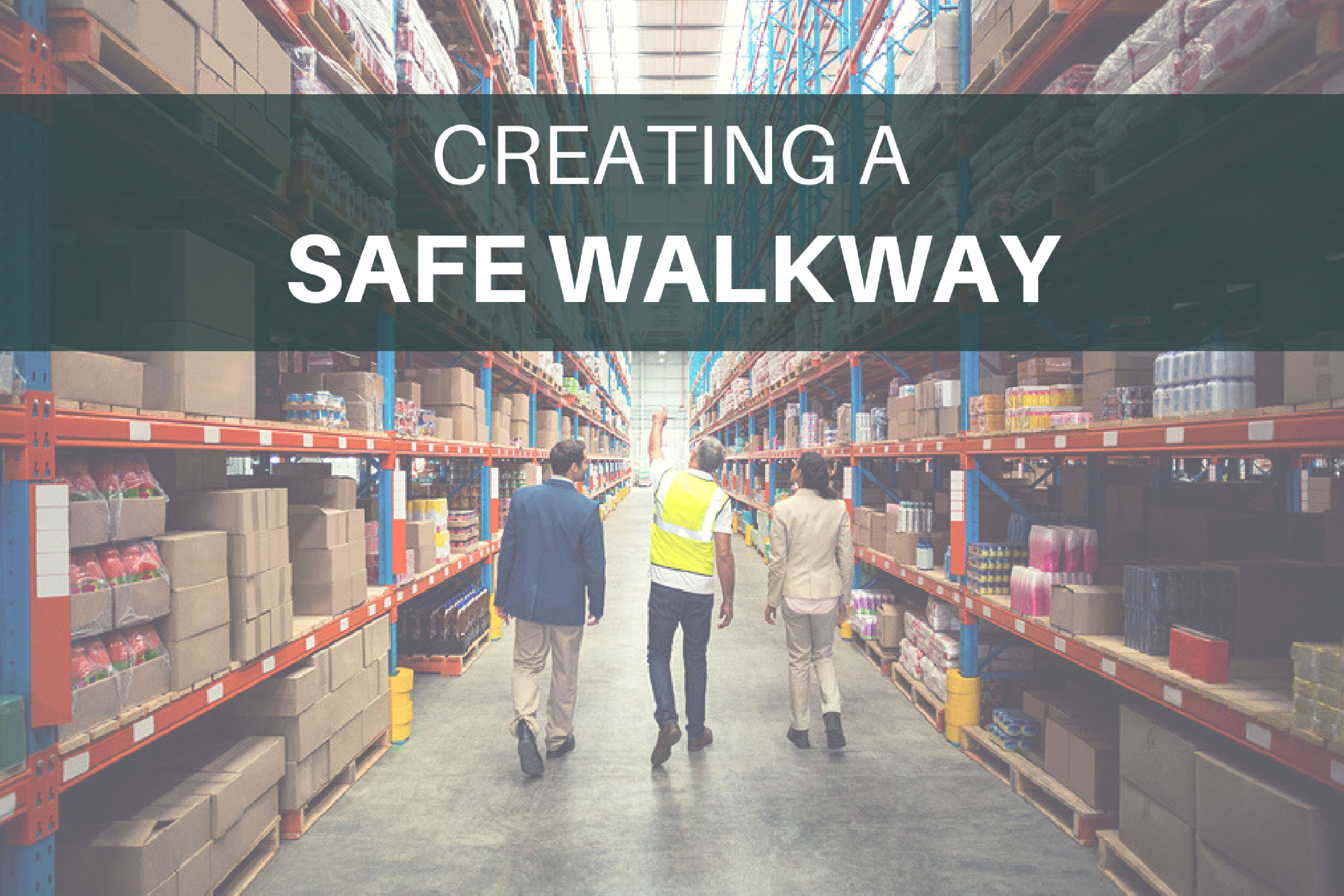Creating a Safe Warehouse Walkway

Pedestrians are some of the most vulnerable employees in a warehouse setting simply because (as we’ve stated in some of our recent articles) in a physical battle between man vs. machine, the machine is going to win…especially when that machine is a rolling piece of equipment weighing thousands of pounds. Hoping pedestrians and operators are smart enough to avoid a tragic incident is not an acceptable – or very effective – safety precaution. What, then, can be done to help ensure the safety of pedestrians?
One of the most important things you can do as a warehouse manager or safety manager is to control exactly where pedestrians are walking while in your warehouse. Making pedestrian travel paths predictable helps to ensure that operators know where to expect people. It’s not that operators should not be alert for pedestrians at all times, but walkways help the operators to know where the high foot-traffic areas are.
However, simply saying, “Stay close to the wall,” or “Don’t cross over there,” is not enough. The first thing you’ll want to do is designate the walkway. Very infrequently will you be able to put a physical barricade up along the entire walkway, but at the very least you can paint it so there is no mistaking where it is. That being said, if you have the luxury of physically separating your people from your machines using rails or bollards, by all means do it. Even if it’s just in certain places. Systems like this Kwik Kit make it easy for you to erect an OSHA-compliant barrier in varying lengths or configurations. There is no substitute for a physical barrier.
Once you’ve painted your walkway and/or added rails or bollards, your personnel need to be trained. Having walkways does you absolutely no good if people aren’t going to stay within the boundaries. The walkways also do you no good if operators are going to barrel through them at high speeds. Set time aside to explain to your employees the purpose of the walkways, the hazards they face if they were to travel outside of them, and what the disciplinary action will be if they violate your rules (whether as a pedestrian or as an operator). No safety procedure is going to be successful if there are no consequences for those that don’t follow it. And, it is important that if you are going to have disciplinary actions, that you follow through with them. Anybody who is a parent is probably painfully aware of what happens when a violator realizes they are facing nothing but empty threats.
It is important to note that you will not be able to have walkways everywhere pedestrians need to walk, otherwise, your entire floor would be painted, which would be as pointless as not painting them at all. When you train your employees, you need to train them on what they need to do and/or where they need to go once they have to step out of a walkway. Just like teaching a child to look both ways before crossing a street, ensure they understand that forklifts have the right of way because they simply may not be able to stop in time for them (at the very least not without losing a load). Also, pedestrians need to always ensure the forklift operator is completely aware of their presence before continuing by making eye contact with the operator. Teach your employees not to place themselves immediately behind any machine or between any machine and a fixed object like a wall. You never know when an operator is going to lose control, hit the gas instead of the brake, or back up when they mean to go forward.
Even though it is more difficult, none of this means that you still can’t control access to undesignated or more dangerous areas. For instance, where your walkway crosses a highly traveled forklift path, you may choose to install industrial safety gates. These industrial gates force the pedestrian to pause and ensure it is safe to proceed before automatically closing to prevent anybody else from wandering through. In this day and age of walking and texting, physically preventing people from wandering into traffic has become a sad necessity.
Finally, make sure you know who is wandering through your warehouse. There is no better way to keep a handle on the safety of everyone in your facility than by knowing who is in there at all times, that they are supposed to be there, they have been trained, and that they adhere to your policies. Sending a random truck driver, for instance, to go to a bathroom in the middle of your warehouse can not only put your product at risk, but you can put them at risk of physical harm as well. This is your facility. Ensure that anybody who sets foot in it goes home safely when they leave.
